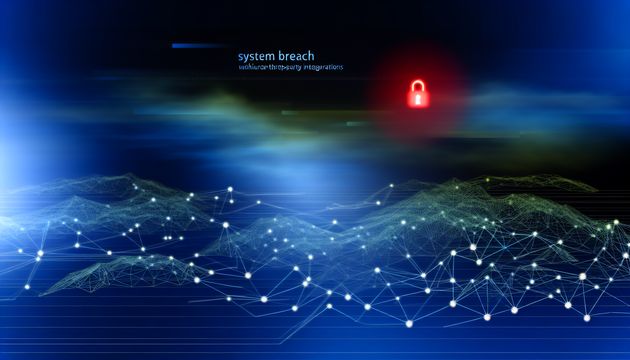
Understanding the SK Telecom Data Breach: Lessons and Future Preparations
The SK Telecom data breach highlights the significant cybersecurity challenges even major telecom companies face. This breach, which went undetected for nearly three years, began with a sophisticated cyberattack involving a web shell—a malicious script that allows remote control—deployed on SK Telecom’s servers on June 15, 2022. This initial compromise enabled attackers to execute commands and spread malware across multiple servers, affecting the personal data of millions of subscribers (BleepingComputer). The breach exposed sensitive information, including USIM data—unique identifiers for mobile subscribers—and IMEI numbers, posing significant risks for SIM-swapping attacks and impacting South Korea’s national infrastructure (Total Telecom). Despite the breach’s scale, it wasn’t detected until April 2025, revealing critical gaps in cybersecurity monitoring (OT A to Z).
The Anatomy of the SK Telecom Breach: What Went Wrong and How It Happened
Initial Compromise and Malware Introduction
The SK Telecom data breach began with a sophisticated cyberattack that went undetected for nearly three years. The initial compromise occurred on June 15, 2022, when attackers deployed a web shell on one of SK Telecom’s servers (BleepingComputer). This web shell provided the attackers with a foothold in the network, allowing them to execute commands and deploy additional malware payloads across multiple servers.
The attackers introduced several types of malware, which were designed to exfiltrate sensitive data from SK Telecom’s systems. A total of 23 servers were compromised, with 15 of these servers containing personal customer information. Despite the scale of the breach, SK Telecom did not detect the malware until April 2025, highlighting significant gaps in their cybersecurity monitoring and response capabilities (Total Telecom).
Data Exfiltration and Impact
The malware deployed by the attackers was highly effective at extracting sensitive data from SK Telecom’s systems. The breach exposed the USIM data of approximately 27 million subscribers, including International Mobile Subscriber Identity (IMSI) numbers, USIM authentication keys, network usage data, and SMS/contacts stored in the SIM (BleepingComputer). This data is critical for identifying and authenticating mobile subscribers, making it a prime target for cybercriminals seeking to conduct SIM-swapping attacks.
In addition to USIM data, the attackers also accessed 291,831 IMEI numbers, which are unique identifiers for mobile devices (BleepingComputer). Although SK Telecom denied this in their latest press release, the investigation team insisted on the accuracy of their findings. The breach’s impact extended beyond individual subscribers, posing a significant threat to South Korea’s national critical infrastructure (OT A to Z).
Security Oversights and Delayed Detection
One of the most concerning aspects of the SK Telecom breach was the delay in detection and response. Despite the initial compromise occurring in June 2022, SK Telecom did not begin logging activity on the impacted servers until December 3, 2024 (BleepingComputer). This lack of proactive monitoring allowed the attackers to operate undetected for an extended period, significantly increasing the breach’s impact.
The breach was eventually discovered on April 19, 2025, when SK Telecom detected malware on its networks and responded by isolating the equipment suspected of being hacked (BleepingComputer). However, by this time, the damage had already been done, and the attackers had exfiltrated a vast amount of sensitive data.
Technical Infiltration Methods
The attackers behind the SK Telecom breach employed a range of technical infiltration methods to maintain access to the compromised network and exfiltrate data. The initial web shell provided a backdoor into the system, allowing the attackers to execute commands and deploy additional malware payloads (Total Telecom).
Once inside the network, the attackers used sophisticated malware to extract sensitive data from SK Telecom’s servers. This malware was designed to evade detection by traditional security measures, such as antivirus software and intrusion detection systems (OT A to Z). The attackers also employed encryption and obfuscation techniques to conceal their activities and maintain persistence within the network.
Response and Mitigation Efforts
In response to the breach, SK Telecom took several steps to mitigate the impact and prevent future incidents. The company issued SIM replacements for all affected subscribers, invalidating the compromised authentication keys and reducing the risk of SIM-swapping attacks (TeamPassword). SK Telecom also strengthened its security measures to prevent unauthorized number porting actions and enhance the overall protection of subscriber accounts (BleepingComputer).
Additionally, a joint public-private investigation team was established to examine the breach and identify the full extent of the compromise. This team conducted an in-depth analysis of SK Telecom’s 30,000 Linux servers, uncovering 25 distinct malware types in 23 compromised servers (BleepingComputer).
The South Korean government also played a crucial role in the response efforts, with the Ministry of Science and ICT and the Korea Internet & Security Agency (KISA) launching an on-site investigation at SK Telecom’s headquarters (Korean Topik). These efforts aimed to restore trust in SK Telecom’s services and strengthen the overall security of the country’s telecom infrastructure.
Lessons Learned and Future Preparations
The SK Telecom breach serves as a crucial lesson on the importance of robust cybersecurity measures and proactive monitoring. The extended duration of the breach underscores the need for continuous network monitoring and threat detection capabilities to identify and respond to potential threats promptly (Korea Herald).
To prevent similar incidents in the future, SK Telecom and other telecom providers must invest in advanced security technologies, such as artificial intelligence and machine learning, to enhance their threat detection and response capabilities. Additionally, organizations should conduct regular security audits and penetration testing to identify and address potential vulnerabilities within their networks (OT A to Z).
The breach also underscores the importance of collaboration between the public and private sectors in addressing cybersecurity threats. By sharing information and resources, organizations can better understand the evolving threat landscape and develop effective strategies to protect their critical infrastructure and customer data (Korea JoongAng Daily).
Final Thoughts
The SK Telecom breach underscores the critical need for robust cybersecurity measures and proactive monitoring. The extended duration of the breach highlights the importance of continuous network monitoring and threat detection capabilities. To prevent similar incidents, telecom providers must invest in advanced security technologies, such as AI and machine learning, to enhance threat detection and response capabilities (Korea Herald). Collaboration between public and private sectors is also essential to address cybersecurity threats effectively. By sharing information and resources, organizations can better understand the evolving threat landscape and develop strategies to protect critical infrastructure and customer data (Korea JoongAng Daily).
References
- BleepingComputer. (2025). SK Telecom says malware breach lasted 3 years, impacted 27 million numbers. https://www.bleepingcomputer.com/news/security/sk-telecom-says-malware-breach-lasted-3-years-impacted-27-million-numbers/
- Total Telecom. (2025). SKT data breach potentially leaks data from 26.9 million users. https://totaltele.com/skt-data-breach-potentially-leaks-data-from-26-9-million-users/
- OT A to Z. (2025). 23 million mobile subscribers’ data leaked: The full story behind the 2025 SK Telecom SIM breach and future preparations. https://ota2z.com/sec-issue-23-million-mobile-subscribers-data-leaked-the-full-story-behind-the-2025-sk-telecom-sim-breach-and-future-preparations/
- Korea Herald. (2025). Lessons from the SK Telecom breach: Enhancing cybersecurity measures. https://www.koreaherald.com/article/10490627
- Korea JoongAng Daily. (2025). SK Telecom hack exposes data of 26 million subscribers over three years. https://koreajoongangdaily.joins.com/news/2025-05-20/englishStudy/bilingualNews/SK-Telecom-hack-exposes-data-of-26-million-subscribers-over-three-years-KOR/2311248



